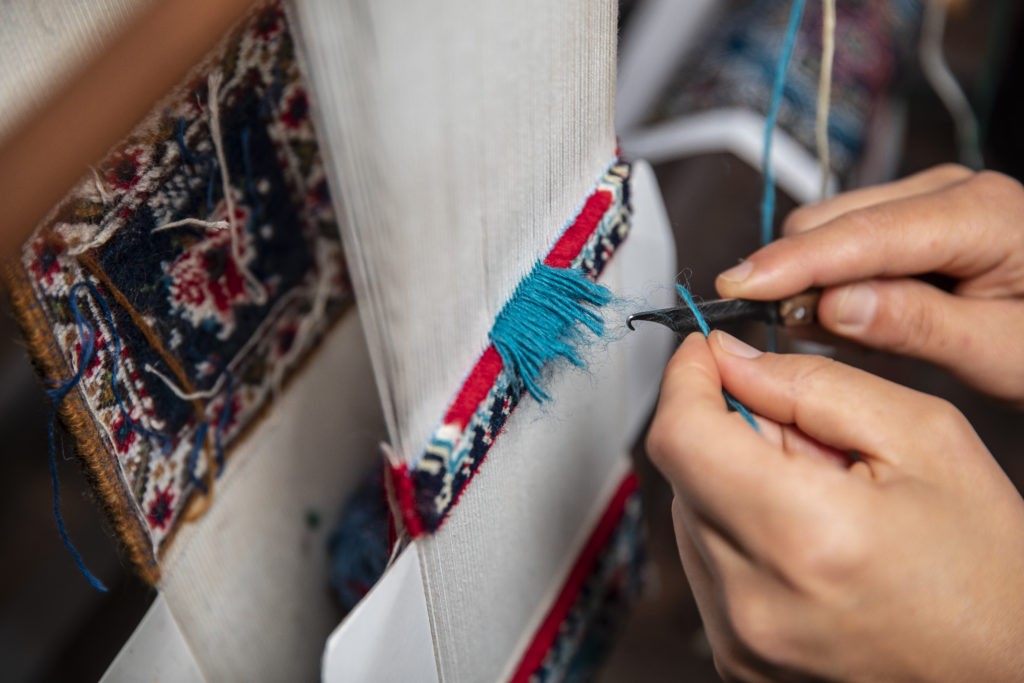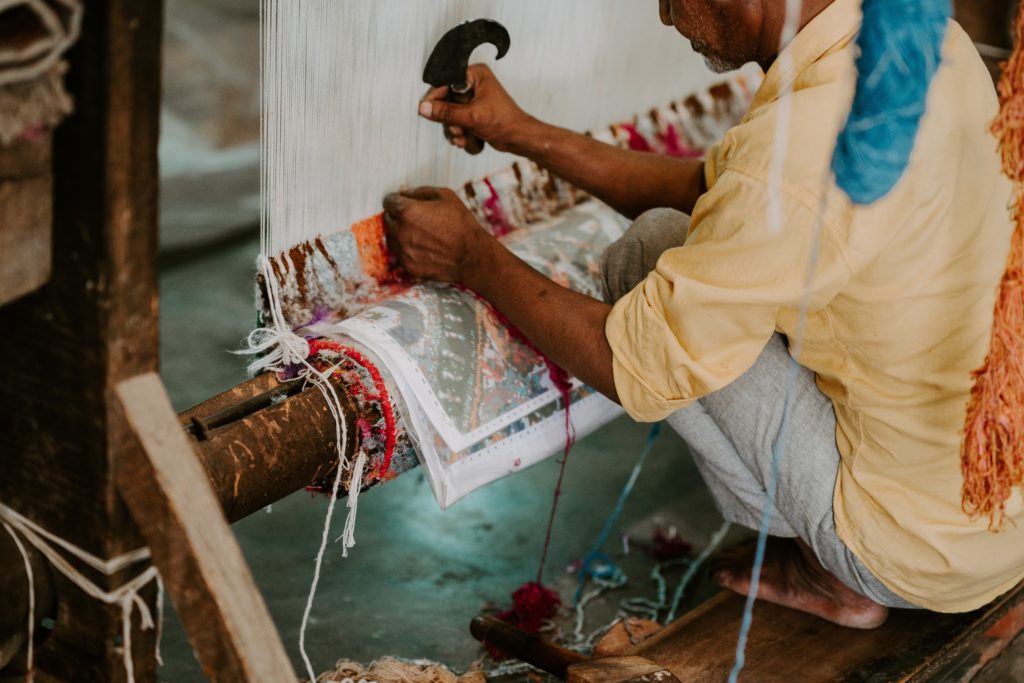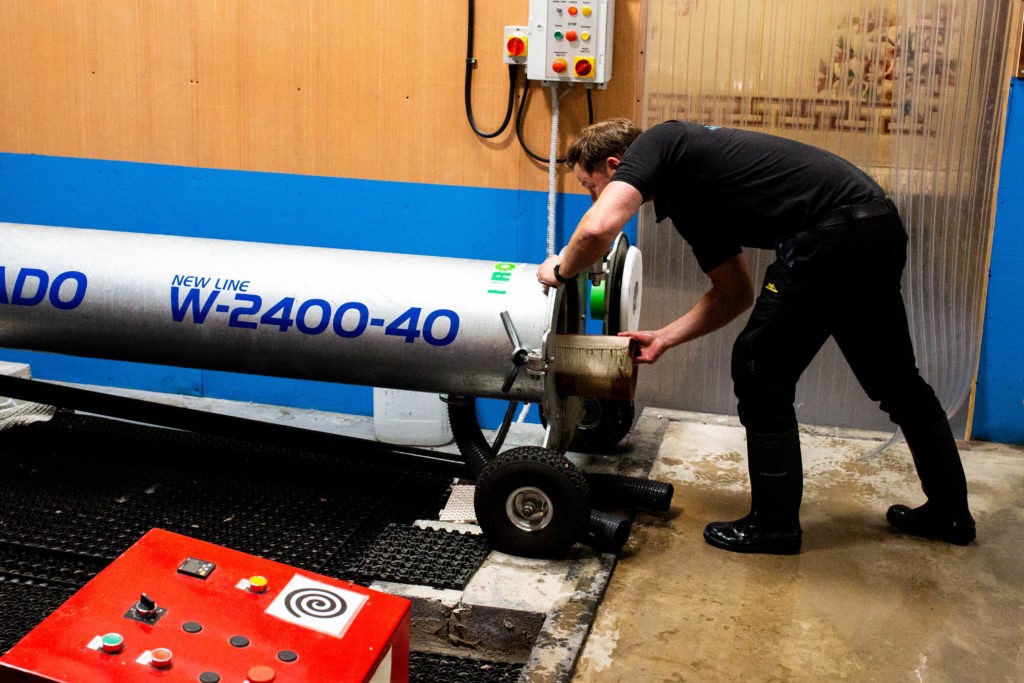Google Rating
5.0
Based on 153 reviews
The Rug Laundry
5.0
Claire Letchford
1740326035
Great service from start to end. Everyone I was in contact with during the process was friendly and efficient. There's a good choice of services and pricing is clear. I had a new shaggy rug which had suffered from my cat deciding it was a lovely new litter tray. Cleaning it myself was proving impossible due to its weight and taking so long to dry. It's been returned to me as good as new and smelling lovely! So pleased I found this company and would absolutely recommend to everyone.
Nicholas Prouse
1737310339
The star rating isn’t high enough. This should be a ten star rating xxxxxxxxxx + x.I Would highly recommend this company, fantastic communication and a absolute amazing job.
Lynne Davie
1733499350
Excellent service. Very pleased with the outcome and my light cream rug like new. Highly recommended.
David Pineau
1733306111
Great professional friendly service. My 2 rugs look brand new!! I can recommend The Rig Laundry to everyone.
Jerry Brown
1731681815
Great service from The Rug Laundry.Our 80 year old rug has taken on a new lease of life after many years of neglect by elderly parents.Excellent communications regarding progress, and worth the cost given the lovely result.
Odette Hardcastle
1729695905
My rug is safely home and I’m thrilled with the result. Fifteen years on, the rug looks like new again and the stain is almost imperceptible. If I had known that an oriental rug could be cleaned so beautifully, I would have done it years ago.Booking, collection, communication and delivery were all brilliant. A terrific service in every respect and tremendous value for money.
Lilly Roetzer
1727455449
Incredible service! The staff were very friendly and chatty and happy to help, the team managed to turn our tatty old shag rug into one that looks better than new! The pricing is very reasonable and accommodating, our rug came back smelling wonderful and exceptionally soft! Our cat loves it! I can't wait to have my other rugs cleaned by the team soon 👌
Kevin Giles
1723643253
Simply superlative service from beginning to end. They managed to remove deep seated red wine stains from a vintage silk rug.
Christine
1722864046
Great service with Aled.Had my Laura Ashley rug cleaned . Came back lovely and clean. Spotless.Very pleased.Thank you.
Trevor Anderson
1718315920
I am flabbergasted at how fantastic my chinese rug looks after being cleaned (see pics). First class, well done 5* well deserved.
Corraine COLLINS Dance Studios
1718271032
Great, efficient service. Puppy soiled rug now as good as new. I highly recommend Rug Laundry 👍🏼
Paul Anstee
1716411034
Great company, great service. Very happy with our lovely clean rug. Very friendly and helpful service throughout the process. We will use again and recommend them without question.
Claire Foxwell
1715692112
Very responsive service. They answered my questions about which type of cleaning to go for very quickly and fully. Rug looks great and it was nice and convenient to be able to drop off and pick up from laundry on Glos Rd rather than pay for collection and return.
Helen
1714063334
Fab service from start to finish. Well worth the money. Would recommend. Fab results.
Leanne Delaney
1707409813
My mother sent her rug to the Laundry not expecting it to come back as perfect as it did. Will use the Rug Laundry always.
Brian Tripp
1706817104
Very prompt service, rug is like new again very pleased, would highly recommend them
claire collins
1706780321
Superb communications, drop off and return, reasonable cost and they looked after my afghan rugs well. Cleanest they've ever been. Highly recommend
Matt Davies
1704708907
Awesome service. Our rug had suffered some unfortunate spillages, and even though it was an antique it was a pretty big investment when we moved to our house. The rug was so badly stained we had to remove it from the room. I didn't think it could be successfully cleaned but the Rug Laundry did an exceptional job. They really know what that are doing, and the custmer service is fantastic. Lots of communication about getting the right service for the type of rug. I also had a LOT of questions which they answered promptly. Our rug looks AMAZING again and was well worth spending the money on a brilliant service!
Helen Coles
1703883677
Can well recommend. Excellent job done on my sheepskin rug. Will definitely use the Rug Laundry again when I need a rug cleaned.
Shanon Burrow
1703878404
A friendly excellent service. Our rug was fresh, clean and looked better than it did when it was new. Thank you!
Chéri Masters
1702302928
Very good customer service from Katie and another gentleman when I called with a query. The collection and redelivery were a breeze, the time frame was accurate and payments were hassle free and easy to make. I will definitely be using them again in the future.
Margaret Whitcombe
1701954395
Telephoned company for a quote and got one immediately. After confirming rug was collected when they said it would be. Driver rang on approach. Very professional. I was updated with a report and was told when rug was ready. Rug delivered in a timely manner. The whole process was seamless and very professional. The method of payment was also straightforward.
Lynne Greenaway
1701377782
Delighted with the result of our rug clean and also the price and service. Would highly recommend, and will definitely come back to the Rug Laundry in the future.
Claire Cruickshank
1701169836
The Rug Laundry did an amazing job bringing a very old dingy rug back to life!
Martin Lee
1700564182
I have been very pleased with the service provided by The Rug Laundry. Troy, the young man who collected and returned my rug, was very friendly and efficient, and the young lady I spoke to on the telephone was also very courteous and helpful.
June Tsakas
1700046616
Excellent communication from start to finish. A brilliant job was done on my poor rug which had been rolled up in a damp garage for over 10 years. It now takes pride of place in my living room and looks fantastic. I would definitely use The Rug Laundry again and highly recommend them.
Ean True
1699257489
Fantastic result on a large wool rug. This is the second time I have used the Rug Laundry and will definitely use again.
Jan Appleton
1698056694
Our rug was cleaned beautifully and the edges mended expertly. The price was very reasonable and we were kept informed about the progress. We would recommend The Rug Laundry.
Phil Jenkins
1697456051
Gwasanaeth gwych! Excellent service and all in Welsh and so friendly AND my rugs are clean. Argymhellir yn fawr/Highly recommended.
Christine Nelms
1697276101
I am thrilled with my rug. It has been completely restored to it's original look and feel.The rug is 17 years old and has had daily use in my living room so it was looking very marked and flat. I opted for the stainguard service so I hope it will last many more years.My rug was collected from my home then cleaned and returned. The guys were friendly and helpful.I think we are lucky to have this service available locally.Thank you very much.
Fiona Remnant
1697222953
Amazing - we have a new rug! It has been returned to us feeling soft and with colours we had forgotten were there.
Jade chadwick
1696433943
My rug was abysmal having a dig,as you can imagine…not good,the rug laundry was friendly,understanding(even helpful when I called regarding my rug,and what the process involved,I have ADHD,and there receptionist was patient and understanding)the rug came back looking brand new!!! And no nasty smell!!! I 100% recommend this company time and time again l the photo doesn’t do it any justice,and yes that’s dog fury as my dog missed his rug
hana hybs
1694792493
Fantastic job of cleaning and repairing my wool rugs and great customer service. I'll be using them again!
susan mayers
1693828968
Excellent service, collected my rug cleaned to perfection and returned it. Highly recommend this company will definitely use again.
Andrew Bertini
1692613170
Really professional service and very happy with the result. My Persian rug is as good as new 🙂
Alison larkman
1691671304
My rug looks like new! I have had my rug cleaned by a carpet cleaner but it didn't remove the stains. Sending it here every stain and mark has gone. I have also had a stain guard added. The dog has been told not to explode on it again
J Price
1689340106
Had a great experience with the Rug Laundry recently where they collected, cleaned and delivered two rugs to a very high standard. Customer service was fantastic as well (thank you, Katie!). Would definitely recommend.
Lowri Jones
1685450440
We are delighted with the service provided by The Rug Laundry! After a previously disappointing experience with another company, we weren’t sure what to expect. But The Rug Laundry really surpassed our expectations. Our shaggy, woollen rug looked so fresh and clean after we unrolled it; it was near enough good as new! Their customer service was also spot on - with regular contact and updates. We will certainly be using them again!
Nichola Houlahan
1684055382
I have a cream shaggy pile wool mix rug measuring approximately 7ft x 13ft. Over a period of 10 years i have had it steamed cleaned several times and although it does appear cleaner i never had the wow moment until The Rug Company cleaned my rug. WOW was my reaction when my rug was returned and unrolled. I wasn’t just really pleased i was THRILLED!!!! My 10 year+ old rug looked like new and there was no sign at all of where the coffee table had sat for about the same amount of time. I was hoping for such a result but was also realistic about the age of my rug and the wear and tear What a difference Thank you so much to The Rug Company
Katie Sara
1681750566
Wonderful cleaning service! My rug smells beautiful and has never looked so clean!
Lea
1681724157
I used this service because I was going to throw my rug out, after my dog had been ill all over it I just couldn't get the smell out but rugs of this size are so expensive to replace I thought I'd give it a go. And I am so glad I did, it was like rolling out a brand new rug. Thank you so much! Would definitely recommend and will definitely use again.
Monika Hlavkova
1679483180
Really great service from the Rug Laundry! My living room rug was getting a bit tired and I didn’t want to replace it because I really love the colour and style and it is no longer in stock. Now I have a virtually new one after the thorough clean! 😍
Mike Slater
1672152158
You get to talk to real people who are helpful, knowledgeable and informative. The service was efficient and the cleaning first class
Nickie MD
1671442325
First class service, we had all our rugs cleaned whilst moving house. Communication was super from collection to delivery and the results were very good indeed. Would definitely use the Rug Spa again. The results are super and the rugs look really lovely. Thank you!
lyndon fletcher
1671309457
fantastic result from the Rug Laundry cleaning to a high standard, rug looks like new once more , thank you for your expertise will certainly use your services again
Carl Branson
1671288850
My first time using The Rug Laundry and i highly recommend them. They made the process really easy. The collection, drop off and payment process couldn't have been simpler..... 10/10. Thanks
Jessica Hoad
1670327107
Brilliant service in every way. We had three heavily stained rugs to be cleaned, these guys took on the challenge and we couldn’t be happier. We used the convenient pick up and drop off service and they stayed in touch throughout. Thoroughly recommend this professional and friendly service, will be using again. Thank you
Nicola Togneri
1668517426
We sent a very dirty white shaggy pile wool rug in for cleaning, and it has come back like new! Delighted - thank you so much. The courier pick up and return system was really easy to use too...
Jonathan Whittle
1667385548
Absolutely astonished at the result, first class :) The rug was a wedding present from my wife's first marriage. She always maintained it was something special; I'd only seen a dull looking grubby thing. I got it cleaned and it's absolutely transformed, we're both amazed at the colours and lustre the cleaning revealed. Worth every penny.
Richard Trottier
1662032897
We were in the process of moving so in June sent our 6 rugs for cleaning before laying them in our new home. Rugs were picked up and returned on the dates promised. Our move was delayed so have only been able to lay out the rugs now. What a difference! The rugs look like new and the colours are so bright. Would use this company again and not hesitate to recommend them to anyone.
Steve Wood
1661332574
Used the Rug Laundry on the basis of the process video on their website. Had three rugs which needed to be cleaned and sent one as a trail. Excellent result, so sent the other two. Used their collection and delivery service as the rugs were too big and heavy to get into a car. Again an excellent service. Collection and delivery at the times promised. All customer facing staff were friendly and knowledgeable. Will use the Rug Laundry again.
Ian May
1661176062
Troy and his team are professional friendly and know exactly what they are doing. It was a true pleasure to do business with The Rug Laundry. The rugs came back in great condition and beautifully clean. I have no hesitation recommending TRL highly.Big thanks to Troy & his team.
Catherine Collins
1658227351
Absolutely brilliant service. Had a large rug cleaned by them and it came back like new!
Neville Goodman
1657983656
The Rug Laundry cleaned our very grubby hall runner, a modern wool rug hand-made in India. It now looks as new. Home collection and delivery included in price and it was all very efficient. I'd certainly use them again.
Timothy Sandy
1654691534
Just had my Rug back. Brilliant job, like a new Rug. Jonathan was excellent with advice and kept me fully informed. Thank you
Wanda Stephens
1652786405
Very happy with the Rug Laundry, professional and courteous service and my rug came home spotless with the edges locked to stop it fraying.
Martin Linsdell
1651922896
Had the worst stain on my Car seat so decided to give Blitzzz ago that we purchased from The Rug Laundry. Everything else that I had tried just didn't seem to shift the mark! Wow wow Blitzzz is amazing! Just wish I had taken before and after pictures. Highly recommended and will now be my go to product thanks to The Rug Laundry. One very happy customer and no longer have to get annoyed everytime I get into my car. 😀
Darren Channell
1645800882
Great Service. Very professional.Managed to sort out my rug which was in a really bad way.Will definitely use again.
Denny Postings
1642867421
Second time used the Rug Laundry. Speedy service just before Christmas too, and exemplary service and results as before. Highly recommended.
Isa Durance
1642720007
I am absolutely delighted with how my large white wool rug has come back- it looks, and feels, as new! Very very happy customer
Bill Pearce
1640074599
Brilliant service, great communication and service throughout. We had three rugs cleaned, they are like new now. Will definitely use again.
Mike Callaghan
1640015779
Had two rugs cleaned and carpets from our motorhome. They look like new!! Fantastic collection and return service. Would highly recommend
Sarat Jones
1637165901
Really impressed with the Rug Laundry. My rug looks lovely and every member of staff we dealt with, either over the phone or in person was lovely. Highly recommend
Lynda B
1636976086
Updated review Nov 2021. Excellent company who do what they say with friendliness and efficiency. I have used them for quite a few years now and my rugs are always returned to me, smelling fragrant, clean and looking like new. With old dogs in the house who have the occasional accident, this is no mean feat! I would reccomend The Rug Laundry to anyone.
Sion Watkins
1633875315
The best recommendation is that we are going back to them. The two rugs we have had cleaned were in excellent condition when returned. They are a firm that has a good client relationship, reward loyal customers with discount and provide excellent value for money
Claire Roberts
1632651864
Really good service, great communication throughout the cleaning journey & the staff are very helpful.Rug looks as good as new if not better!Will always use this company, I cannot recommend highly enough.
dilwara tucker
1630668523
A while ago we had returned from Morroco with two beautiful rugs. Unfortunatley one, very light in colour, had a stain which we could not remove and we could not find anyone else who could. I had given up hope of being able to have the stain removed and the rug restored. I was wrong! I found the Rug Laundry and now the rug is looking beautiful again. I found the staff very helpful and proffesional. They are expert in their knowledge and efficient in their arrangments. I would highly recommend them
Sandra Rowe
1628689561
The best rug cleaning service there is I’ve been with them over25 years they represent all of the above
David Wilkins
1626339648
We had a large rug in our lounge that needed a good clean, it was getting a bit mucky what with three kids and a dog. We found Rug Laundry, they gave us a quote, they collected it, cleaned it, returned it looking good as new - with no fuss, no messing about. Would use again.
Mike
1625847440
Very very professional , it was a pleasure doing business with the Rug Spar couldn’t be more happy with the service I had , rug cleaned to a high quality . Staff very approachable and couldn’t do enough , will be returning , Thankyou again.
Wendy John-gittins
1623355870
The communication is great, very pleased with results of my Persian rug.
Holly Curson
1623086448
I contacted the company after my daughter had a sickness bug and unfortunately she was sick over her rug, it didn't matter how much I clean the rug, I just couldn't get rid of the smell.They were extremely professionally Troy pick up the rug and returned it and it's now like new and no more smell ☺️They had amazing customer service and friendly throughout, would definitely use them again and would highly recommend them.
Jan Osborne
1622718664
I cannot recommend Rug Laundry highly enough. They collected on time , from a boat, and returned in the same efficient way. The rug which is very patterned 11 years old and has had a puppy being house trained on it has now been restored to it's original state. Amazing, thank you so muchJan
The Clean Bean
1621439072
Fantastic response, carpet looks as good as I bought it years ago! Brilliant service too.
Brian Beckwith
1618051554
Some 40+ years ago, whilst working for a short time in Istanbul, I purchased a hand-made Hereke rug 2 x 1.3 m. I dare not attempt to clean it myself, so sought a professional services. My local carpet-cleaning service would not touch it, but recommended The Rug Laundry. Initial telephone contact indicated that they understood my rug, so asked them to do it. They arranged collection, and later, its return. It came back looking new, with the colours richer than I remembered them new.From my one experience, I would recommend this service; a friendly and knowledgeable team, who clearly take a pride in their care in handling exotic and rare rugs and carpets.
Philippa Stanley
1617531613
5 stars all the way for rejuvenating a large cream rug in the rug laundry. It looked and smelt lovely.
Kate Glanville
1616577872
I’m absolutely delighted! My beautiful rug has a whole new life. Stains gone , grime gone , smells gone! It’s like having a brand new rug! And wonderful, fast , friendly professional service! Can’t recommend enough!
Clive Ellis
1613827072
The picked the rug up as arranged. They did a really good job. The rug came back as good as new. I would really recommend this service!
Matthew Cole
1611071689
I moved into my new home 6 months ago and found a stain on the carpet which I could not get clean after trying all different 'carpet cleaners'. These guys have worked their magic and the whole carpet looks brand new! Not any sign there was ever any marks. Really nice team, professional, efficient and great value for money! 100% recommended, could not ask for any more!
Nicholas Speller
1607541884
From my first contact with this company they were informative and helpful. I felt I was given a very individualised service. The end result was really really good; the rug was a second hand very grubby silk rug, which now positively glows and feels so soft underfoot.
Rebekah Greenberry
1607524821
Great personal service from Troy and the team. My long pile wool rug hadn't been cleaned since it was new, and that was at least over 12 years ago, I didn't think there was anything they could do. It's like new, so soft and fluffy and smells amazing. Collected from my door and delivered safely back by Troy. Regular updates by email and phone. Prompt response to my phone calls and emails. Would recommend 👍
Menu






